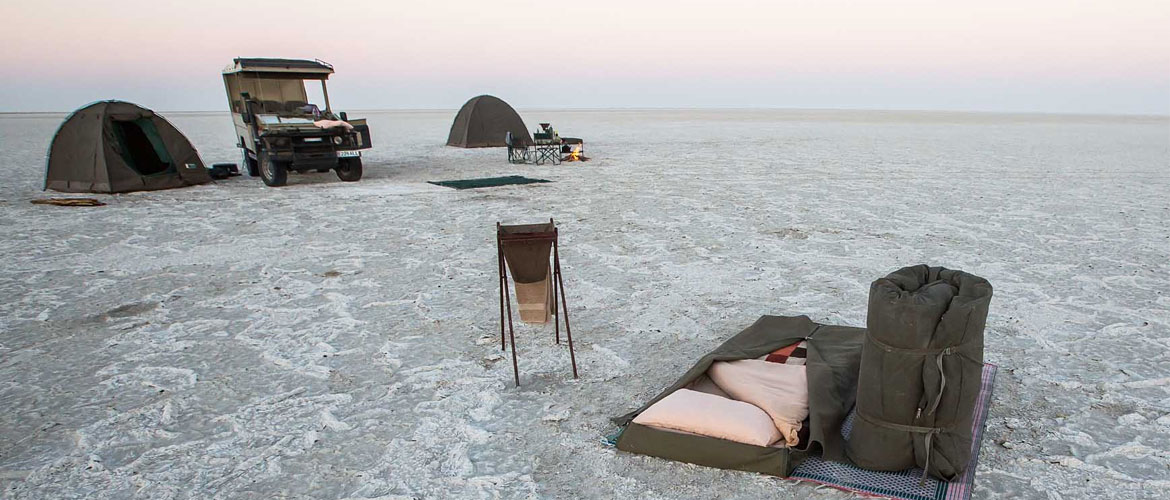Salt Pans Is All About
The Makgadikgadi Salt Pans to the centre of Botswana are as unpredictable as they are beautiful. The area is made up of the Makgadikgadi Pans National Park and the Nxai Pan National Park which are intersected by the main tarred Francistown road. Although these are two separate parks, Safari Lifestyles have grouped them together as one region generally due to their similarity in climate, fauna and flora. We have also gone further and included the areas east of the National Parks, encompassing the massive Ntwetwe Pan and Sua Pan towards Nata.
This arid and hot region of Botswana holds as many secrets and mysteries as the Okavango Delta does animals. An ancient place made up of many salt pans, the Makgadikgadi itself is an ancient lake bed. Approximately 3 million years old, this was once filled by waters flowing from the Okavango region until the formation of the Gumare fault, which lowered the land decreasing the levels of water flooding in.
Evidence of human habitation has been found in the form of fossil tools fashioned by prehistoric man, however the area is now largely uninhabited with just a few villages and settlements on the outskirts. The total Makgadikgadi Salt Pans area is made up of scrub and grassland, which is interspersed with salt pans of varying sizes, the largest of which being 5,000 km². The pans themselves can be massive and it is possible for the traveller to truly see nothing but the curvature of the earth for 360 degrees.The conditions are often deceiving… a thin layer of bone dry crust may well hide a quagmire of mud. For many months of the year they keep up this arid appearance until the rains arrive from November onwards when the pans can look like the largest mirrors in the world. Vast areas are transformed into very shallow lakes, which attracts two astonishing spectacles.
Seemingly from pure instinct, thousands of zebra and wildebeest begin their migrations and end up at this water oasis. The landscape is transformed into a lush grassland. The second spectacle is the arrival of up to 250,000 breeding lesser and greater flamingos, generally settling in the east at Sua Pan giving the local Nata Bird Sanctuary an incredible yearly visual feast. The area, bordered to the left by the Boteti River, usually dry but now in full flow, is another of Botswana’s unique environments, which offers up a very different landscape with very different game expectations. Landmarks such as the famous Baines Baobabs in Nxai Pan National Park, perhaps more majestic than those on Kubu Island, present the traveller with a side of Botswana that is not often seen but one that should not be missed.







